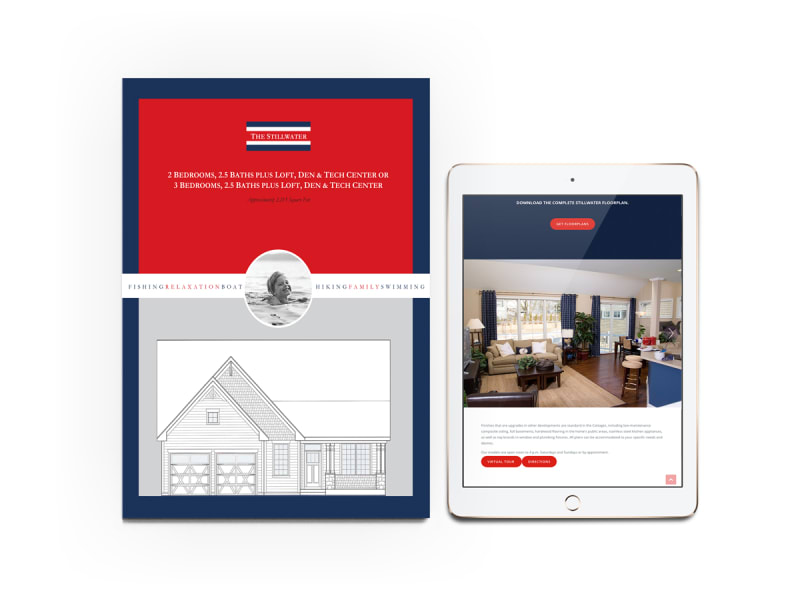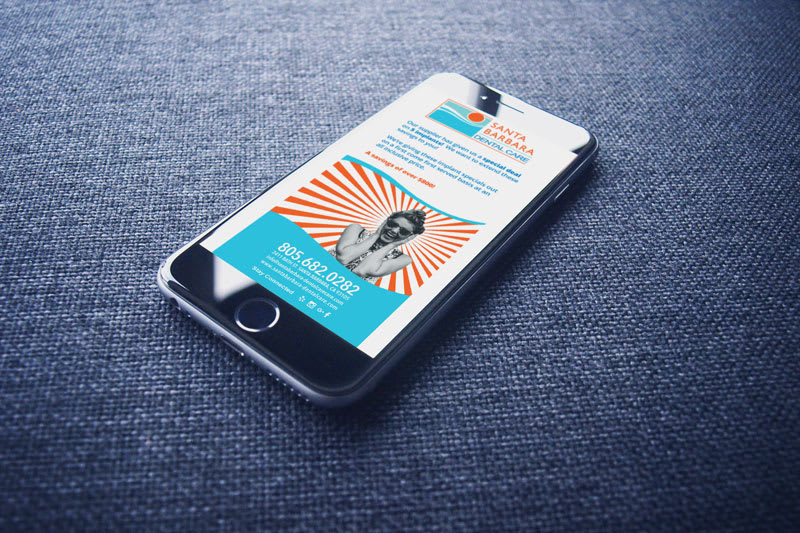What is drip marketing?
Drip marketing is simply sending a series of emails to your audience automatically, on a set timing, based on actions your subscribers take or changes in their status on your email list.
You may have heard the term email campaign or email blast in reference to drip marketing, these are usually a one time email and are not part of the drip.
Businesses use drip marketing to keep in touch with an audience—in a personalized and targeted way—following important actions or dates.For example, a drip campaign might be based on someone:
- Placing an order
- Attending an event
- Signing up for a webinar
- Registering for a report, white paper or online course
- Abandoning a shopping cart
- Engaging with customer service
- Not placing an order for a while
A few characteristics make drip marketing powerful and distinct. The content is usually:
- Prewritten and automated
- Sent on a preset schedule in response to audience action or another strategic automation plan
- “Mapped” to important engagement points
The “drip” part of drip marketing refers to sending a slow and steady stream of emails. It might be 2, or 5, or whatever you decide is the best number of emails to keep in touch on a given topic without over-communicating. For each campaign—such as an abandoned cart drip campaign—you write the emails once, and then automate the personalizing and sending. Once they’re set up, drip marketing campaigns happen automatically.
Why use drip campaigns?
Drip marketing can help you boost sales by turning visitors into buyers, increasing repeat purchases, and reengaging a dormant audience. By communicating your company’s value, you build a relationship with your audience and demonstrate that you’re a great resource for their needs and that your business has the product or service that they are looking for.
Drip campaigns can also be effective because they’re targeted, meaning they’re based on a specific action and can be personalized to your buyer. More than 90% of consumers say they’re more likely to buy from companies that recognize and remember them.
How drip campaigns are used
Drip campaigns are designed to reach out with a targeted message for someone at the right time. Since they’re automated emails—like welcome messages, happy birthday wishes, and order notifications—they work for your business while you focus on other things.
Automated drip campaigns make it easy to connect with the right person at the right moment—without doing the work every time. Whether they’re triggered by dates or actions, there are many examples of drip campaigns that could work for your business.
For example, a home builder might use a drip campaign to send an automated series to a potential buyer that first subscribed to a specific floor plan for a home they liked on their website.
A dental practice might use a drip campaign to educate patients that showed interest in teeth whitening.
Reach out on dates that are important to your audience
Date-based automations make it possible to communicate with your audience on the days that matter to them. You can use these automations on many kinds of occasions, like:
Subscription renewal or reordering prompts. If your business has any products on a subscription or membership basis—such as health or career coaching courses, a gym or yoga studio, a paid newsletter, or a delivery service—then a drip campaign is a great way to notify your audience when their subscription is up for renewal. Remind them of the value you provide and how they’ve benefited from your services. If you can, entice them with new offerings that are in the works.
Birthdays, anniversaries, and other events. While you may not turn these into a series, an email on an audience member’s birthday, the anniversary of their first purchase, or another relevant event can be a great way to reinforce your brand value—and perhaps even prompt a purchase.
Communicate based on a user’s behaviors
Many drip campaigns can be triggered by an action a subscriber in your audience takes (or doesn’t take). Here are a few examples:
Welcome emails. When someone new joins your audience as a subscriber, it’s a key moment to make a good impression. With a welcome series, you can share everything about your business that a newcomer needs to know. You can also use welcome emails to follow up with someone you met in person, like at an event you hosted—for example, a trunk show, wine tasting, or sale. A drip campaign can be an effective way to keep new audience members posted on upcoming events, sales, or other activities and to make them feel like you share their values.
First purchase automations. When someone makes their first purchase from you, it’s a great opportunity to thank them for their business, remind them of the quality of your product, give them tips on how to get the most from their purchase, suggest complementary things that other buyers have purchased, and reinforce that they made a good decision. Saying thank you at this early stage of your business relationship can make them feel part of a special community.
Product recommendations. When someone makes a purchase, a great way to boost sales is to suggest related items. This can be included in an order confirmation or shipment notification email. For example, if someone buys a dress on your site, you might suggest a belt or scarf—whether they’re often bought together by other shoppers or recommended by your in-house experts. Alternatively, you might follow up a few weeks, or even months, after a purchase to suggest refills or parts. For example, if someone buys an air purifier on your site, you might send an email 3 months later suggesting replacement filters.
Follow-up emails to educate and onboard your audience. If someone engages with your customer service team—for example, to inquire about order status, shipping timing, or some other concern—a drip campaign can prompt them to do more. For example, if they call about a missing invoice or payment, a drip campaign might encourage them to sign up for emailed invoices or online or automatic payment. Likewise, if they started but didn’t complete a tutorial video on using your product or a product registration, a drip campaign can encourage them to finish—and better tie them to your business.
Abandoned cart. Online shoppers often put something in their cart, then remove it before purchase—or abandon the purchase altogether. A well-executed abandoned cart email can encourage them to reassess the purchase. Be careful, though, you don’t want to appear overly intrusive. For example, if the shopper abandoned a particular skirt, you might send an email promoting your whole spring line, or a line from that designer, without mentioning the specific item they selected.
Lead nurture. Active interest from prospects is particularly well suited to drip campaigns. If someone registers for a webinar or a content element like a white paper or interactive tool, that’s your cue to reach out to them with relevant content. For example, if you provide lawn care, and a prospect signs up for your guide to winter-proofing their yard, you can send them emails with additional tips and include promotions of your yard care products and services.
Unsubscribe emails. If someone unsubscribes from your e-newsletter, you might follow up with an email asking them for feedback. If they unsubscribe from your subscription service (such as an online course), in addition to asking for feedback, you might provide a special “we want you back” offer or incentive. You can also follow up with them 3 or 6 months later, when their situation may have changed, to woo them back.
How to set up a drip campaign
Drip marketing is an always-on marketing workhorse that maintains the marketing, nurturing, and selling essential to your success.
There are many drip marketing programs, our favorite is Mailchimp, in fact we’re a Mailchimp Expert Partner. If you don’t have a Mailchimp Account, sign up here to get started then, follow these 5 steps to set up and manage your drip campaign:
- Choose your trigger. What specific action or date will your drip campaign be based on?
- Identify your audience(s). For example, will your “first purchase” drip campaign go to all new audience members, or only those whose purchase is over, say, $100?
- Craft your message for each email. Your drip campaign emails don’t need to be long, but they definitely need to be consistent with your brand.
- Measure and adjust based on performance. The right measurement for your campaign will be based on the type of email you send, its audience, and other factors. Monitor how your various emails are working, and be prepared to make tweaks based on what you learn.
- Maintain the copy in your drip emails. The copy you use may go out of date as your offerings evolve; review all of your drip campaigns periodically to be sure they don’t go stale.
Start using drip campaigns for your company
With all that you have to do, drip marketing can help with your company promotion efforts! While it’s sending the right message, at the right time, to just the right audience, you can be focused on other business priorities.
In fact, if this all sounds a bit overwhelming, you can hire us to teach you one-on-one or hire us to do it for you.
Take a look at some of the recent campaigns we’ve set-up for our clients:
Home Builders Association of Greater Chicago Awards Event – eKey Awards
Newport Cove – Tallgrass Floor Plan
Paula Radke Website Launch and New Arrivals – Jewelry




